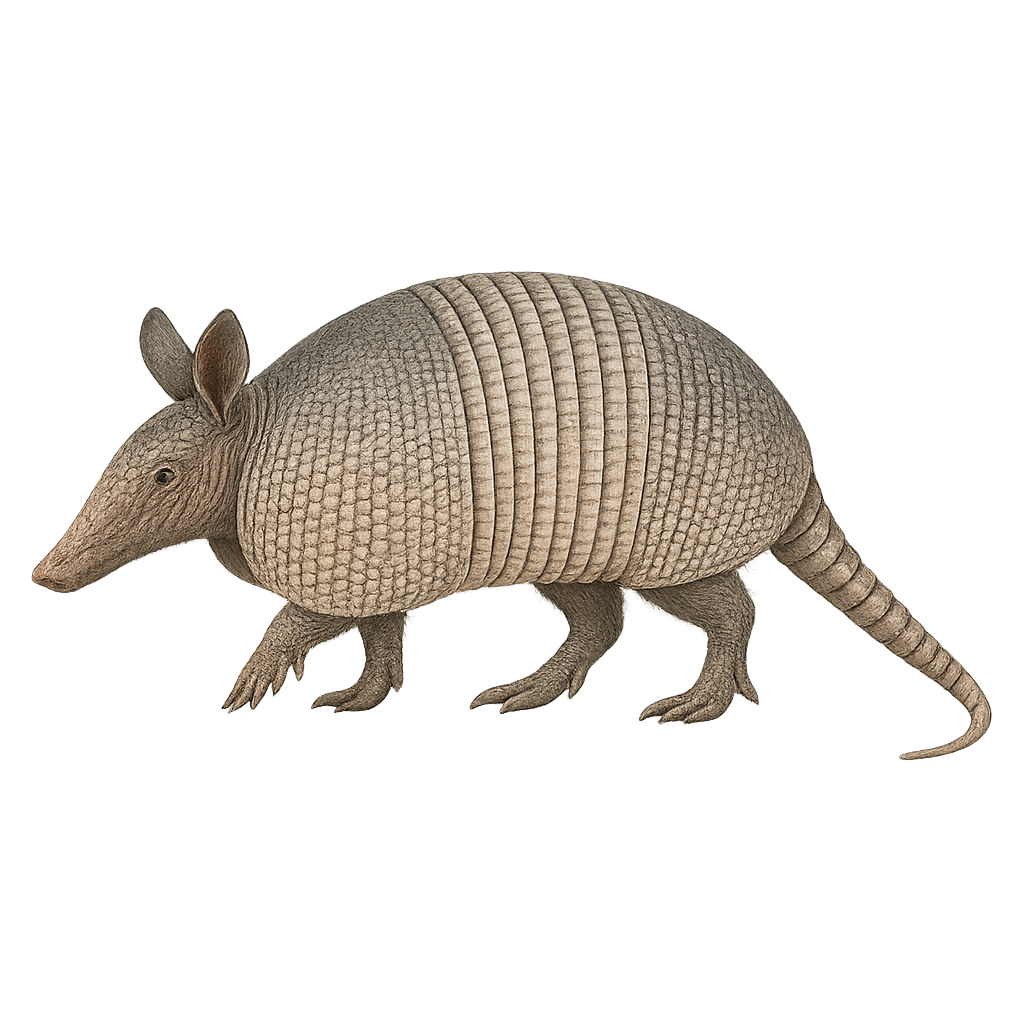Your wildlife photography guide.
Explore the nine-banded armadillo in detail, study its behavior, prepare your shots.
Where to observe and photograph the nine-banded armadillo in the wild
Learn where and when to spot the nine-banded armadillo in the wild, how to identify the species based on distinctive features, and what natural environments it inhabits. The WildlifePhotographer app offers tailored photography tips that reflect the nine-banded armadillo’s behavior, helping you capture better wildlife images. Explore the full species profile for key information including description, habitat, active periods, and approach techniques.
Nine-banded armadillo
Scientific name: Dasypus novemcinctus

IUCN Status: Least Concern
Family: DASYPODIDAE
Group: Mammals
Sensitivity to human approach: Suspicious
Minimum approach distance: 10 m
Rut period: July to August
Gestation: 120-150 jours
Births: December to January
Habitat:
forests, grasslands, wetlands
Activity period :
Mainly active at night, generally discreet during the day.
Identification and description:
The nine-banded armadillo, Dasypus novemcinctus, is a distinctive armored mammal native to the Americas. It is easily recognized by its hard shell made of bony plates and its nine movable bands that provide some flexibility. This armadillo typically measures between 40 and 60 cm in length, not including its tail, which can add an additional 25 to 40 cm. It weighs between 3 and 6 kg. Primarily nocturnal, it feeds on insects, small invertebrates, and occasionally fruits. It can dig quickly to escape predators or find food. Although often solitary, it can be seen in small groups during the breeding season.
Recommended lens:
400 mm – adjust based on distance, desired framing (portrait or habitat), and approach conditions.
Photography tips:
To photograph the nine-banded armadillo, it is advisable to use a 400mm or longer telephoto lens to capture detailed images without disturbing the animal. Look for it in forests or grasslands at dusk or night, as it is primarily nocturnal. Be patient and discreet, as the armadillo is suspicious and can hide quickly. Use a tripod to stabilize your camera in low-light conditions and try to capture moments when it is moving to showcase its natural behavior.
The WildlifePhotographer App is coming soon!
Be the first to explore the best nature spots, track rutting seasons, log your observations, and observe more wildlife.
Already 1 449 wildlife lovers subscribed worldwide

